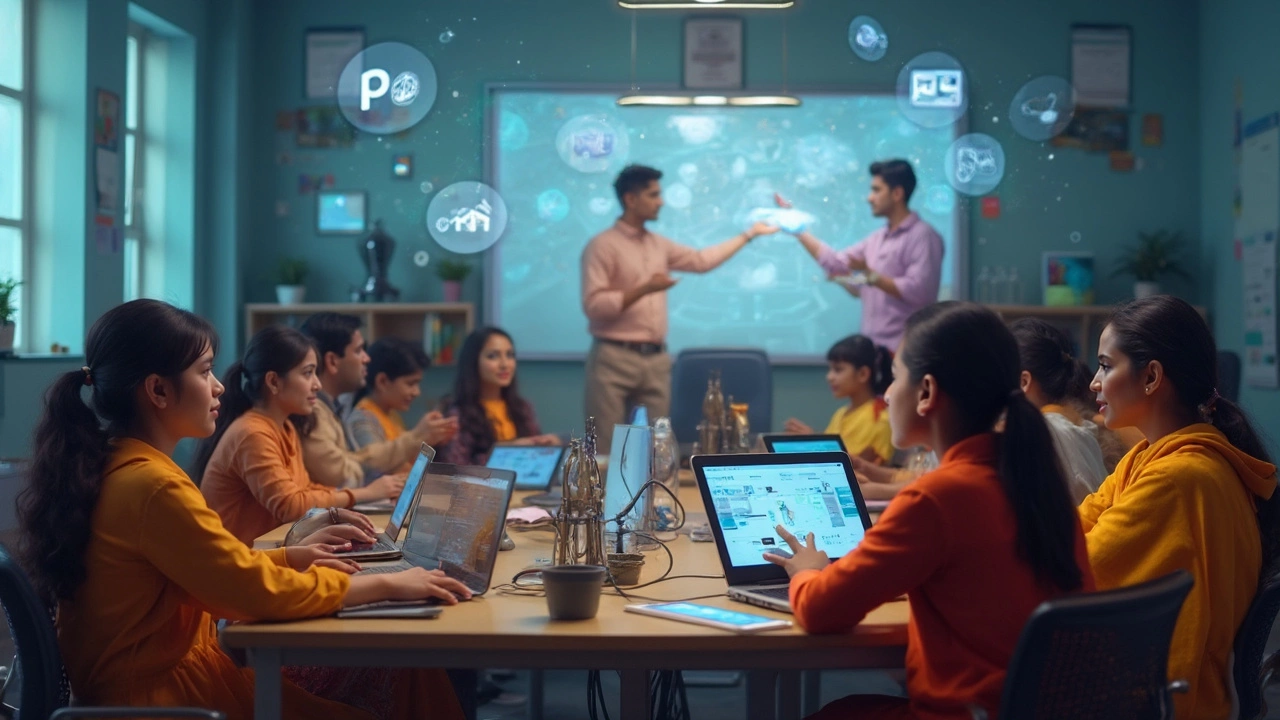Online Teaching Platforms: What Works and What Doesn’t in 2025
When you think of online teaching platforms, digital systems that connect teachers and learners over the internet. Also known as eLearning platforms, they’re no longer just a backup option—they’re the main classroom for millions of students in India and beyond. Whether you’re a teacher trying to reach more students or a parent looking for reliable learning tools, you’ve probably seen dozens of options: Zoom, Google Classroom, Moodle, Udemy, Teachable, and more. But not all of them are built for real learning. Some are just video calls with a chat box. Others give you quizzes, assignments, progress tracking, and even AI feedback—those are the ones that actually stick.
What separates a good online teaching platform, a digital system designed to deliver structured learning experiences remotely from a bad one? It’s not the fancy logo or the number of features. It’s whether it supports asynchronous learning, learning that happens on your own time, without live sessions and synchronous learning, real-time interaction between teacher and student. Most Indian students juggle school, part-time work, or family duties. They need content they can watch at 10 PM after dinner. They need assignments that don’t require them to be online at the same time as their teacher. That’s why platforms that offer downloadable videos, auto-graded quizzes, and discussion boards beat ones that only host live lectures.
And it’s not just about the tech. The best platforms make it easy for teachers to build lessons that stick. They let you upload short videos, add interactive notes, track who’s falling behind, and send reminders. They integrate with tools like Google Drive and WhatsApp—because let’s be real, if your students aren’t on WhatsApp, you’re not reaching them. In 2025, the most successful teachers aren’t the ones with the most expensive gear. They’re the ones using simple platforms to create consistent, bite-sized learning habits. Think of it like cooking: you don’t need a Michelin-star kitchen to make a great meal. You need the right ingredients, timing, and routine.
That’s why the posts here focus on what actually works. You’ll find guides on choosing the right platform for your goals, what features matter most for Indian students, and how to turn a basic tool into a powerful learning engine. You’ll see real examples from people who used these platforms to teach coding, English, NEET prep, and even government exam strategies—all from their homes. No theory. No fluff. Just what’s helping students learn and teachers survive in a world where the classroom moved online—and never left.
- By Nolan Blackburn
- /
- 16 Apr 2025
Best Online Teaching Platforms: Which One Should You Choose?
Choosing the perfect online teaching platform is crucial for educators diving into virtual classrooms. It's not just about bells and whistles; the right tool can transform teaching methods. We'll explore the top platforms, weighing their pros and cons, and check what sets them apart. Whether you're a newbie or a seasoned educator, getting this decision right can elevate your digital teaching game.





